EV charging infrastructure encompasses multiple charging levels and connector types to serve different needs. Level 1 (120V) provides basic overnight charging, while Level 2 (240V) delivers faster rates suitable for daily use. DC Fast Chargers offer rapid charging up to 350kW for long-distance travel. Common standards include J1772 in North America, Type 2 in Europe, and Tesla’s proprietary network. Installation costs range from $500-$2,000 for home setups, with various public options available. Understanding these options guarantees ideal charging strategy.

As electric vehicles continue to reshape the automotive landscape, understanding the various types of charging infrastructure has become essential for both current and prospective EV owners. The charging ecosystem encompasses several distinct technologies, each serving specific needs in the electrified transportation network. AC chargers, including Level 1 and Level 2 options, work through the vehicle’s onboard converter, while DC fast chargers bypass this system for rapid charging capabilities. Public charging stations are strategically placed at retail centers and government facilities to enhance accessibility for EV users.
The fundamental distinction between charging levels considerably impacts charging speed and convenience. Level 1 chargers, operating at 120 volts, provide a modest 3-7 kilometers of range per hour, making them suitable primarily for overnight home charging. Level 2 units, connected to 240-volt outlets, deliver notably faster charging rates, adding 25-75 miles of range hourly. Level 3 DC fast chargers, with outputs ranging from 50 to 350 kW, represent the pinnacle of charging speed for long-distance travel. By 2030, these charging options will be complemented by smart grid technology that enables efficient power distribution and vehicle-to-grid capabilities.
EV charging levels dramatically differ in speed, from Level 1’s modest overnight charging to Level 3’s powerful fast-charging capabilities for road trips.
Connector standards vary by region and manufacturer, with Type 1 (J1772) dominating North American markets and Type 2 (Mennekes) prevailing in Europe. The Combined Charging System (CCS) has emerged as a versatile solution, incorporating AC and DC capabilities in a single port. Tesla’s proprietary connector system, while exclusive, offers advantageous charging speeds through the company’s Supercharger network. Regular charging optimization practices can help extend battery life and maintain peak performance efficiency.
Charging performance depends on multiple variables, including battery capacity, power output, and the vehicle’s onboard charging capabilities. The charging process naturally slows as batteries approach full capacity, regulated by sophisticated battery management systems to optimize longevity.
Installation options span residential, public, and workplace settings, with costs varying considerably based on charging level and location. The financial aspects of EV charging present a compelling case for home installation, despite initial setup costs ranging from $500 to $2,000. Public charging networks typically charge premium rates but offer convenience for long-distance travel.
Government incentives often offset installation expenses, while subscription-based charging plans can reduce ongoing costs for frequent users.
Frequently Asked Questions
What Happens if My EV Runs Out of Charge During a Journey?
When an EV’s battery depletes, the vehicle gradually loses power before stopping completely.
Critical systems like power steering and brakes become compromised. Drivers should immediately activate hazard lights and safely pull over.
Most EVs enter a “limp mode” beforehand, reducing speed and power to reach safety.
Recovery typically requires flatbed towing to a charging station, as conventional towing risks damaging the motor-wheel connection.
Can Extreme Weather Conditions Affect EV Charging Speed and Efficiency?
Extreme weather greatly impacts EV charging performance.
Cold temperatures below freezing can reduce charging speeds by up to 50% and diminish battery efficiency, while excessive heat forces charging systems to slow down to prevent battery damage.
Weather-related infrastructure challenges, including storm damage and power outages, can also disrupt charging availability.
Preconditioning batteries and using weather-protected stations help mitigate these effects in both hot and cold conditions.
How Long Does an EV Battery Typically Last Before Needing Replacement?
EV batteries typically last 15-20 years or approximately 200,000 miles before requiring replacement, with annual degradation rates of 1.8% to 2.3%.
Under ideal conditions and proper maintenance, some batteries can exceed 400,000 miles. Federal regulations mandate an 8-year/100,000-mile warranty, though actual longevity depends on factors like charging habits, temperature exposure, and usage patterns.
High-end models with advanced lithium-ion chemistries often demonstrate superior durability.
Are There Mobile Charging Solutions for Emergency Situations on Remote Roads?
Mobile EV charging solutions exist for emergency roadside situations, offering both Level 2 and DC fast charging capabilities.
Portable units like the Blink Mobile Charger deliver up to 9.6 kW, providing approximately 1 mile of range per minute.
Battery-powered mobile chargers from providers such as Mobi EV eliminate infrastructure dependence, while roadside assistance services increasingly deploy these units for stranded vehicles in remote locations.
Can Charging Multiple EVS Simultaneously Affect the Power Output per Vehicle?
Simultaneous EV charging typically reduces power output per vehicle when sharing a charging station. A 50kW DC fast charger, for instance, might deliver only 25kW to each vehicle when two are connected.
Power-sharing algorithms in modern chargers dynamically allocate available power based on factors like battery state-of-charge and vehicle capabilities. Some high-capacity chargers maintain consistent output through load balancing, but most dual-charging scenarios result in longer charging times.
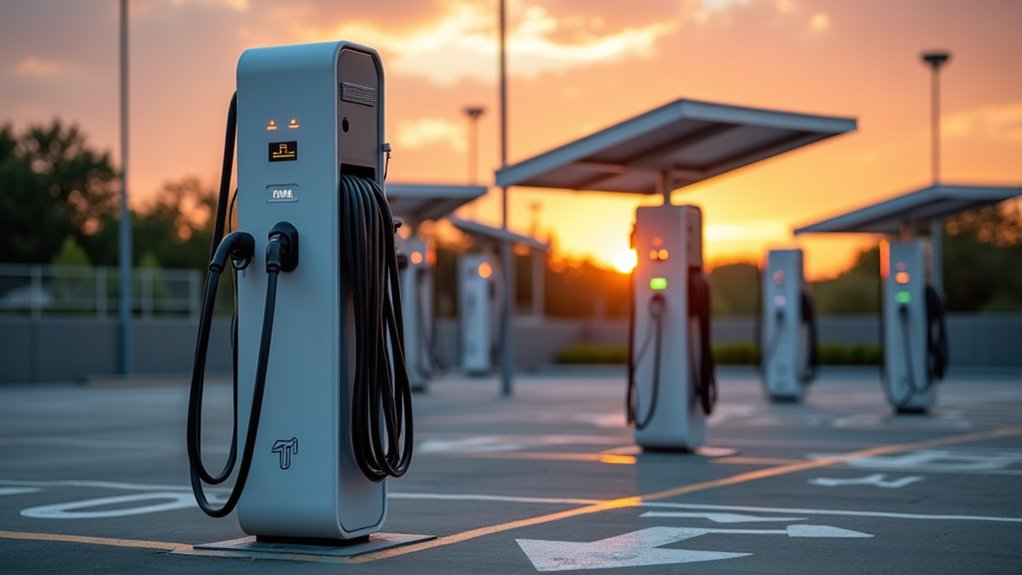

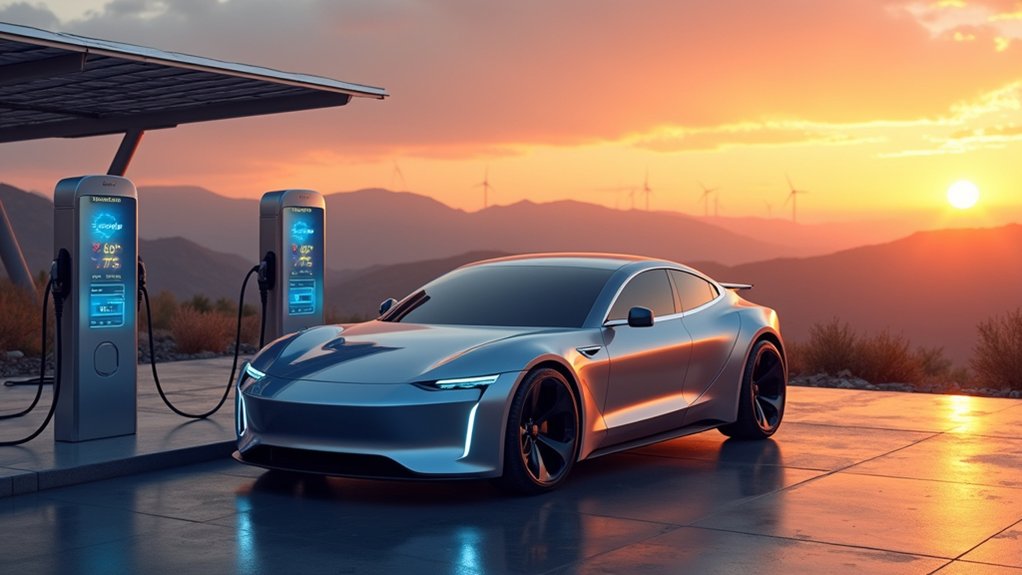
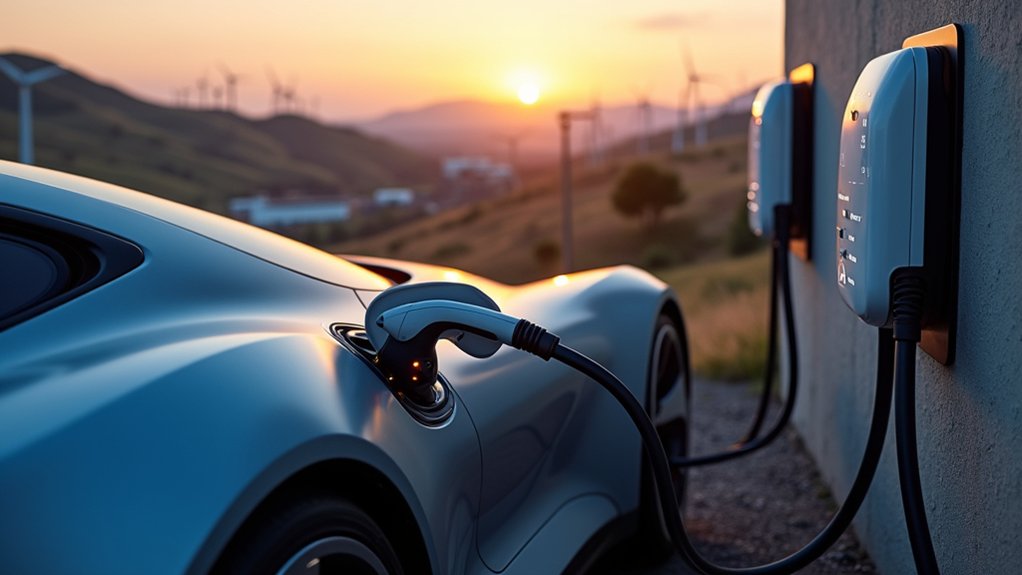
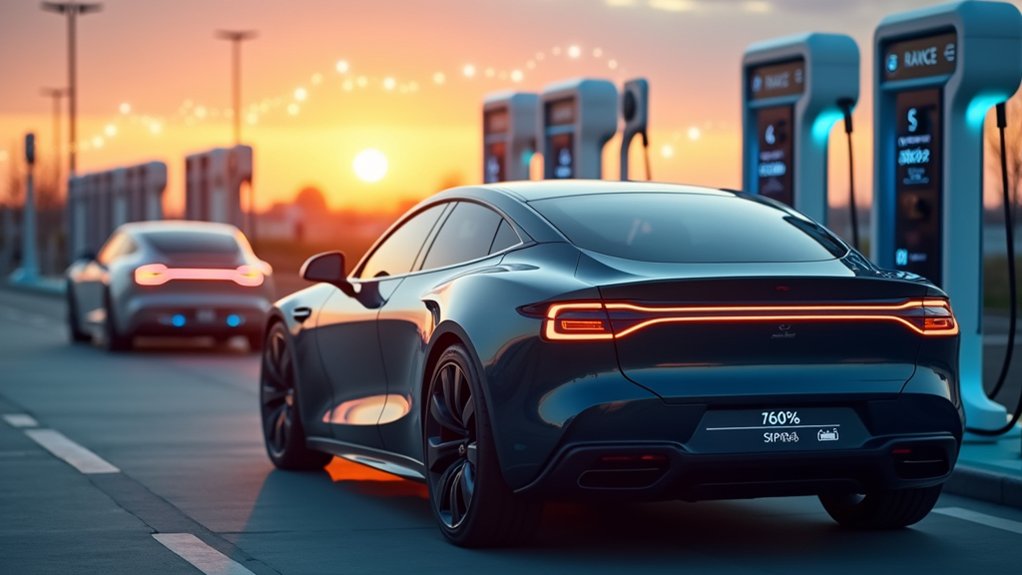
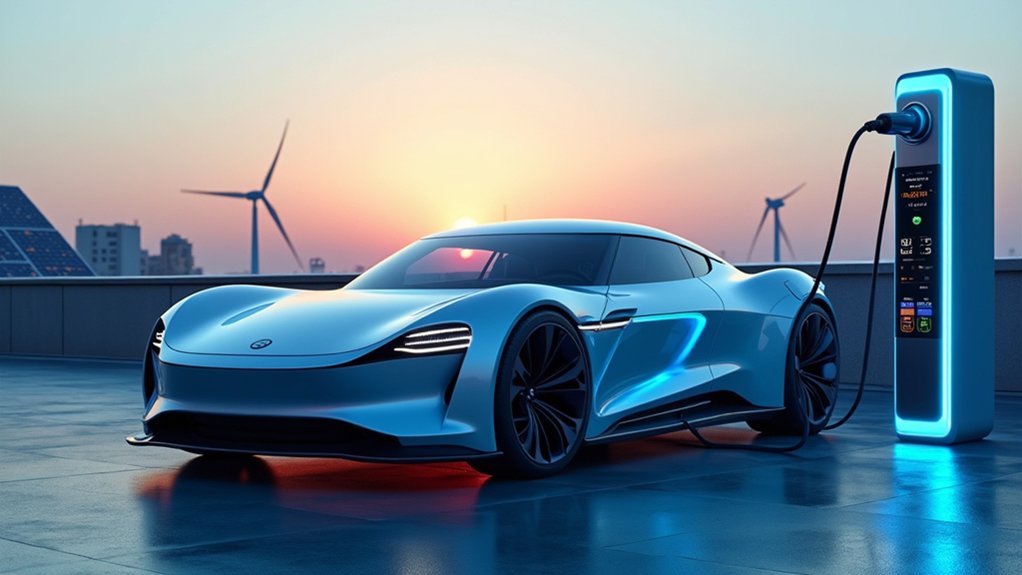



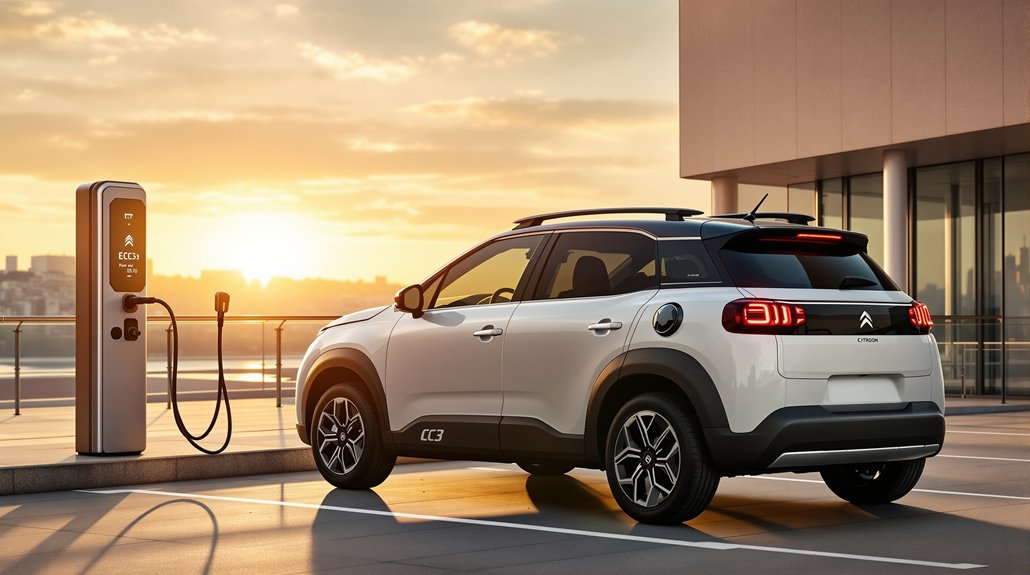
1 comment